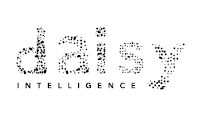
AI Underwriting is Transforming the Way Insurers Manage Risk
 Daisy Intelligence
Daisy Intelligence
With increasing demand and pressure to provide better service, artificial intelligence (AI) has become an invaluable tool to underwriters in managing risk and pricing policies. By analyzing large amounts of data, AI provides accurate and timely insights - helping underwriters make better decisions. AI also has the power to reduce errors, automate repetitive tasks, and standardize the underwriting process across different insurers.
Ultimately, the benefits of AI underwriting are numerous, and as the scope of the technology increases, insurers can expect even greater improvements in the underwriting process. Without a doubt, AI-powered underwriting is more efficient and accurate, leading to better outcomes for both insurers and policyholders.
Pain Points in Today’s Underwriting Process
One of the primary pain points with the current underwriting process is the degree of manual work. The underwriting process relies on the collection and review of significant amounts of data (e.g., financial documents and personal information), making it incredibly time-consuming. In turn, there are often delays in policy issuance. With customers steadily expecting more from their providers, this has great potential to affect customer satisfaction and retention.
The level of manual work also makes the process quite costly, as a significant portion of budget must be allocated to underwriting and administration – leading to higher premiums and reduced profitability for insurers. Manual data entry also leads to data entry errors and subjective judgments that can lead to bias, resulting in inaccurate risk assessments and pricing that causes losses for insurers and policyholders alike.
The lack of standardization in the underwriting process also provides an additional pain point. Different insurers may use different criteria to assess risk, resulting in inconsistencies in pricing and policy issuance. Once again, leaving insurers at risk of dissatisfaction among policyholders.
To successfully push back against these challenges, integrating AI into the underwriting process is critical.
The Importance of AI Underwriting

AI helps underwriters align pricing with risk while minimizing fraud, waste, and abuse.
To do so, AI applies peer analysis to underwriting data - comparing applicant details like salary, car type, personal information, etc. to relevant peer groups to identify outliers. For example, a home value provided in a new application may be an outlier when compared to previously reported home values in the same neighbourhood.
AI also looks at the historical claiming activity of peers. If a new applicant is similar to an existing customer from a peer group that has high claiming activity, we can infer that the applicant would have similar claiming behaviour and thus be higher risk. With this information, underwriters are better positioned to create appropriate premiums for policyholders.
Ultimately, the impact of AI is threefold:
- Accuracy: With AI analyzing large amounts of data from a variety of sources (e.g., financial records, personal information, etc.), underwriters can assess risk more accurately.
- Fraud detection: AI identifies patterns and anomalies in application data that may indicate fraud. Armed with this information, underwriters are better able to identify fraudulent applications and take appropriate action.
- Automation: AI automates the manual processes involved in underwriting, such as data entry and document review. This helps underwriters work more efficiently, reduces the risk of errors and bias, and frees underwriters from rote and manual work.
The Value of AI Underwriting
As aforementioned, one of the key benefits of using AI in underwriting is the ability to analyze vast amounts of data in a short time, not only resulting in saved time but also enabling insurers to make more informed decisions.
Furthermore, AI is entirely objective - eliminating judgments that may be influenced by personal biases. This helps insurers make fair and accurate decisions, resulting in better outcomes for both the insurer and policyholder.
Finally, AI helps insurers identify fraud more effectively. As aforementioned, AI flags suspicious activity and alerts underwriters to potential fraudulent applications. With fraud, waste, and abuse identified and eliminated before policies are issued, or claim payments are made, insurers will realize a significantly improved loss ratio. Organizations will also realize significantly lower operating costs when leveraging AI.
The use of AI underwriting is transforming the way insurers manage risk and price policies. AI analyzes vast amounts of data quickly and accurately, reducing the need for manual intervention and minimizing errors and biases.
As the insurance industry continues to adopt AI, we can expect to see even more benefits in the underwriting process, including more accurate pricing, faster policy issuance, and increased customer satisfaction. The future of insurance underwriting is undoubtedly AI-driven, and the benefits of the technology are abundantly clear.
To learn more about how AI is transforming the underwriting process, get in touch!




